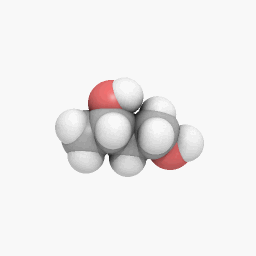

The last byte of the logical screen descriptor is the pixelĪspect ratio. Viewers and browsers generally have no use for it. GIFLIB supports reading and setting this byte, but modern Should be used for pixels on the virtual canvas that aren't overlayedīy an image. It represents which index in the global color table Rendering model for GIFs in which sub-images are composited onto a To understand it you have to remember the original "picture wall"

This byte is only meaningful if the global color tableįlag is 1, and if there is no global color table, this byte should beĠ. The next byte gives us the background color It on output 5.0 and later versions read and preserve it. Until version 5.0, GIFLIB ignored it on input and zeroed
SEQUENCE PICTURES TO GIF SOFTWARE
Of limit disappeared in the mid-1990s, and modern GIF software ignores Time the GIF specification was written in the late 1980s. The sort flag reflected the high cost of dual-port memory at the This can help the imageĭecoder, but is not required. Order of "decreasing importance," which typically means Values is 1, then the colors in the global color table are sorted in Perversely, this can force a waste of memory space in images The consequence is that color table lengths have to be an exact power Was designed when memory was much more expensive than it is today,Īnd the designers felt strong pressure to economize on every bit. Simply have allocated a byte or two for color table length. The sample image represents 2 bits/pixel 111 would represent 8 bits/pixel. If the value of this filed is N, the number ofĮntries in the global color table will be 2 ^ (N+1) - that is, two TheyĪre only meaningful if there is a global color table, and allow you toĬompute its size. The next three bits are the color resolution. See that we will have a global color table (as will usually be the If it'sġ, then a global color table will follow. If it's 0, then there is no global color table. The first (most-significant) bit is the global color tableįlag. To understand these, we need to expand the byteĩ1 to binary as 10010001 and look at the fields inside it. The next byte contains four fields of packed data, the "logical Some canvas about which the GIF format holds no information.Thus, theĬanvas width and height are mainly fossils. Or as image libraries, with the GIF client handling compositing into Generally used either as animations in which each sub-image is a frame

Would render multiple images in a GIF on a common canvas, giving anĮffect like a picture wall. The GIF format seems to have been designed with the idea that viewers The canvas width and height are usually ignored by modern viewers. Means where we would read 0A 00 from the byte stream, we would normally write Least significant byte is stored first (little-endian format). These value can be found in the first two pairs of two bytes each.īoth are 16-bit, nonnegative integers (0-65,535).Īs with all the other multi-byte values in the GIF format, the This block tells the decoder how much room this image will The logical screen descriptor always immediately follows the GIF-processing software recognizes both versions, For maximumĬompatibility, GIFLIB will normally write an 87a signature unless the

Normally the version string will be either "89a" (ie Of the specification that was used to encode the image. Let's get started with the firstĪll GIF files must start with a header block. Local color table, image data, plain text extension, application extension, comment extension, and trailer. The different types of blocks include: header, logical screen descriptor, Later we'll provide samples of missing block types whereĪppropriate. Note that not all possible block types are represented in this See the sample file and its corresponding bytes below. We will learn more by walking through a sample GIF file. Secction, in particular, can be repeated any number of times. Every path following theĪrrows corresponds to a valid block sequence. The following railroad diagram shows all of the different types ofīlocks and where they can be in the file. Type, followed by a payload length byte, followed by payload. Length but self-describing they consisting of a byte identifying the block The first twoīlocks are fixed length and fixed format. Originally developed atĬompuServe in the late 1980s, it is now a W3C standard.Ī GIF file is made up of a sequence of data blocks. The authority on the content of GIFs is the GIF89a specification.


 0 kommentar(er)
0 kommentar(er)
